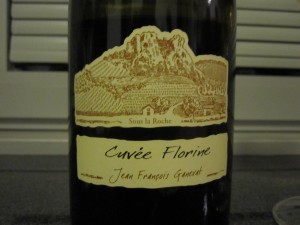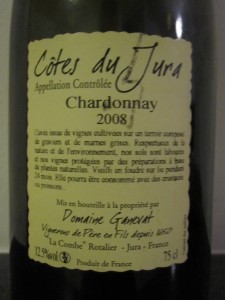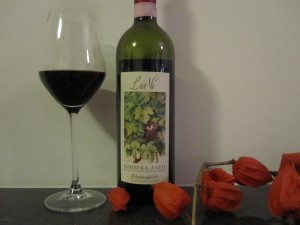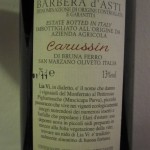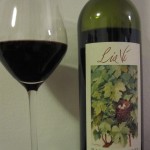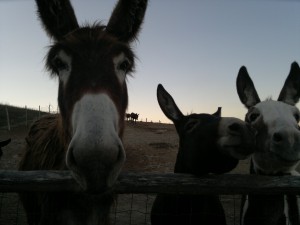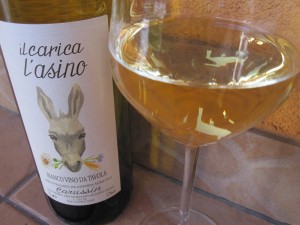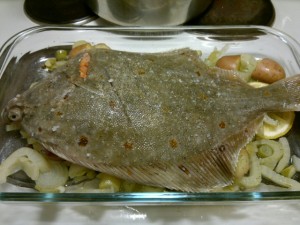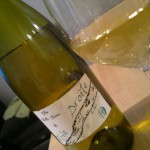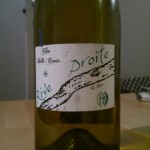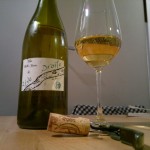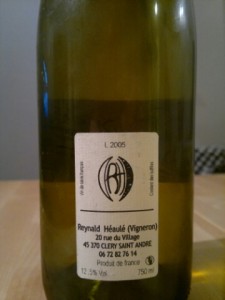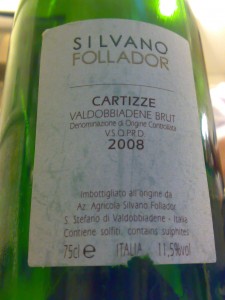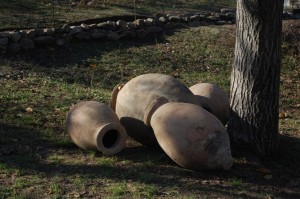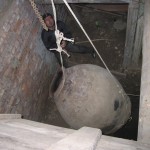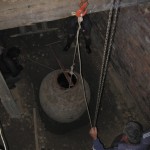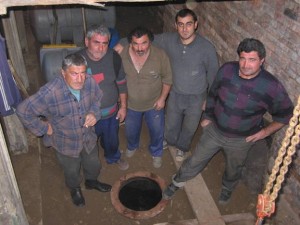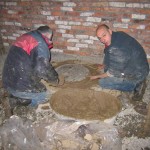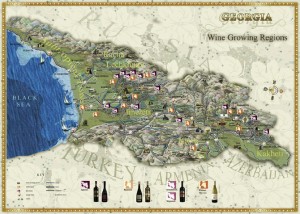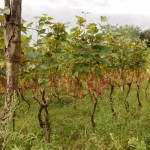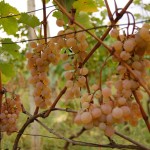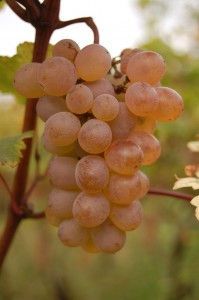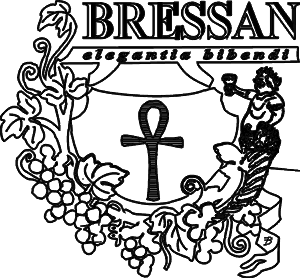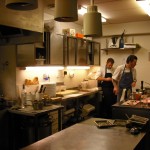Dec 3, 2011
A (quick) tasting note: 2008 Jean-François Ganevat Chardonnay Cuvée Florine
The Jura. One of my favorite areas of wine production in France. Just head West towards Switzerland from Northern Burgundy and you’ll get there. Exciting reds made from the Poulsard grape and zingy whites made from the Savagnin, and you’ll also find the classics – Pinot Noir and Chardonnay, the grape tasted here. Except, this is not the same “Chardonnay” you find in Burgundy. Rather, a Jura-type Chardonnay which gives smaller yields. You can read more about Biodynamic producer Ganevat from this very informative post.
Date Tasted: November 18, 2011 22:00
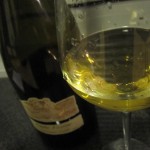 Appearance: Rich golden yellow, click on photo
Appearance: Rich golden yellow, click on photo
Nose: “Orangina” (orange soda – very strange), minerals. Not a very open and giving wine right away – especially following the Pierre Frick Cremant. More the silent, elegant type. Restrained.
Palate: Extremely vinous, as vinous as a wine can get without adding something to get it that way. It spent 24 months in 500 liter barrels with the lees. Could lend to the vinousity. A very well integrated 12,5% alcohol – barely felt it. Not a very complex wine and not a very long finish. The best this wine offers is it’s concentration and texture.
A little too “buttery” and rich for my palate, but the structure, concentration and vinousity of this wine are major pluses. I think that many would enjoy this wine because of the mouth feel. A great wine, but not a wine I would search out for myself. However, it might be interesting to taste an older vintage. Anyone?
